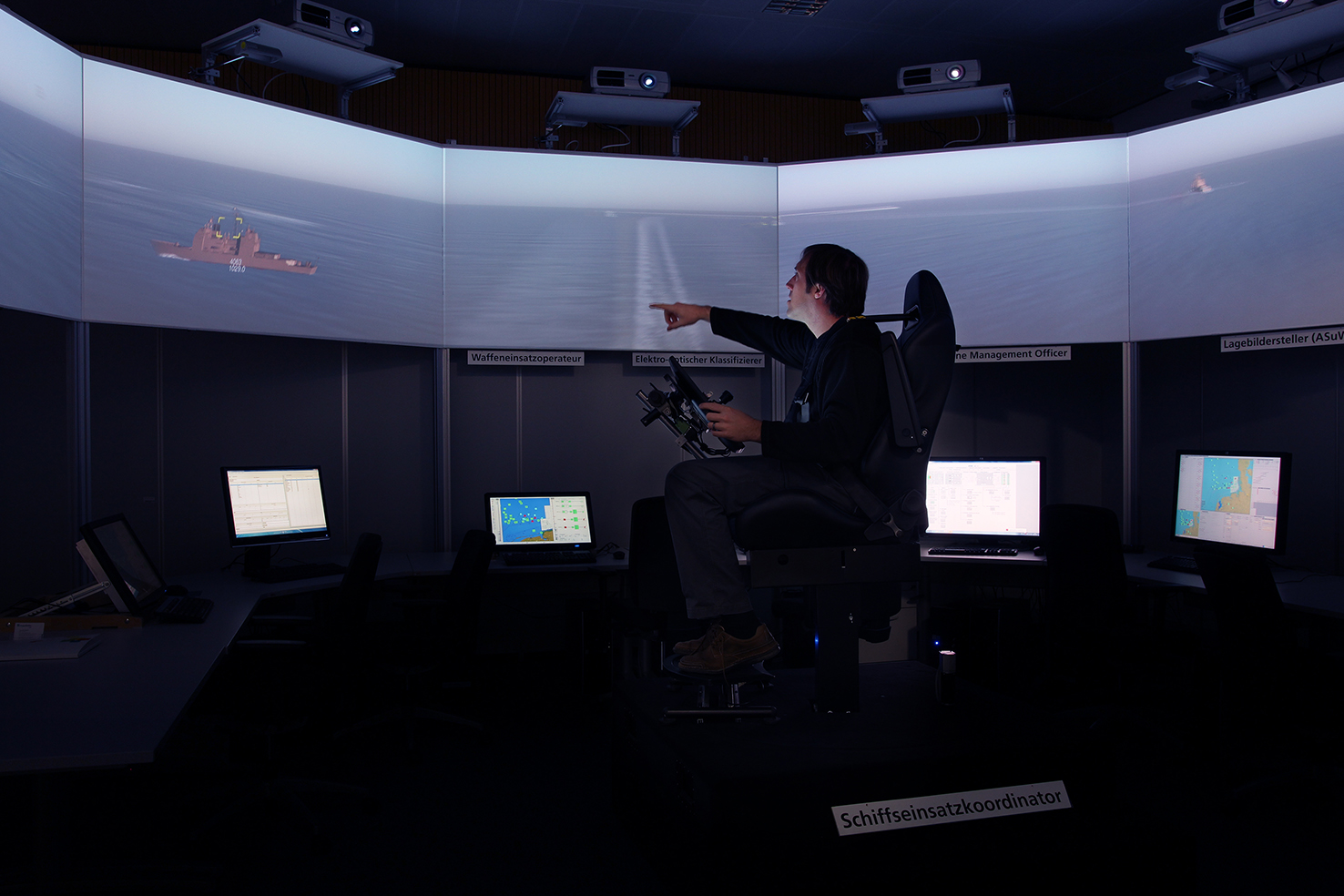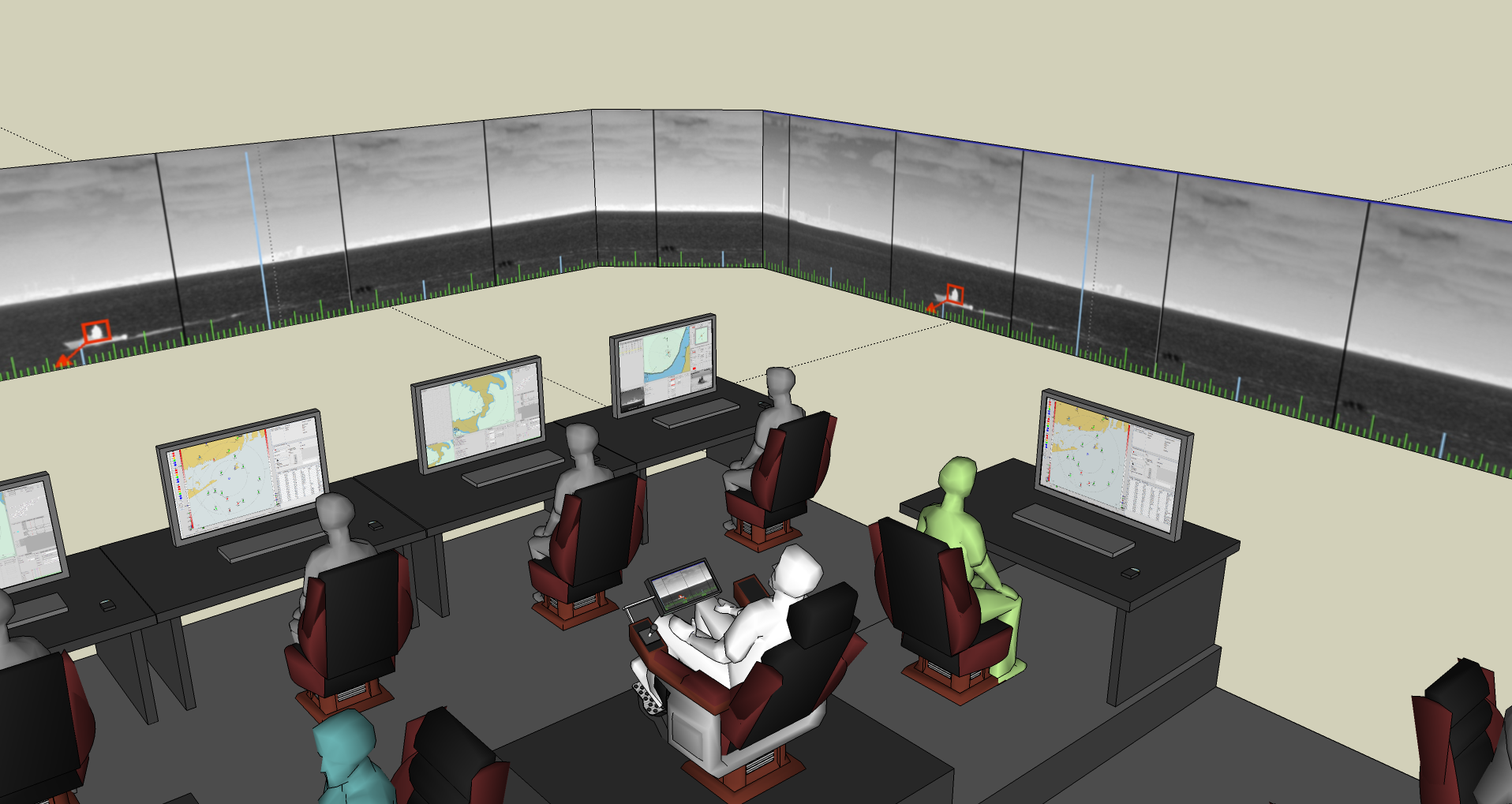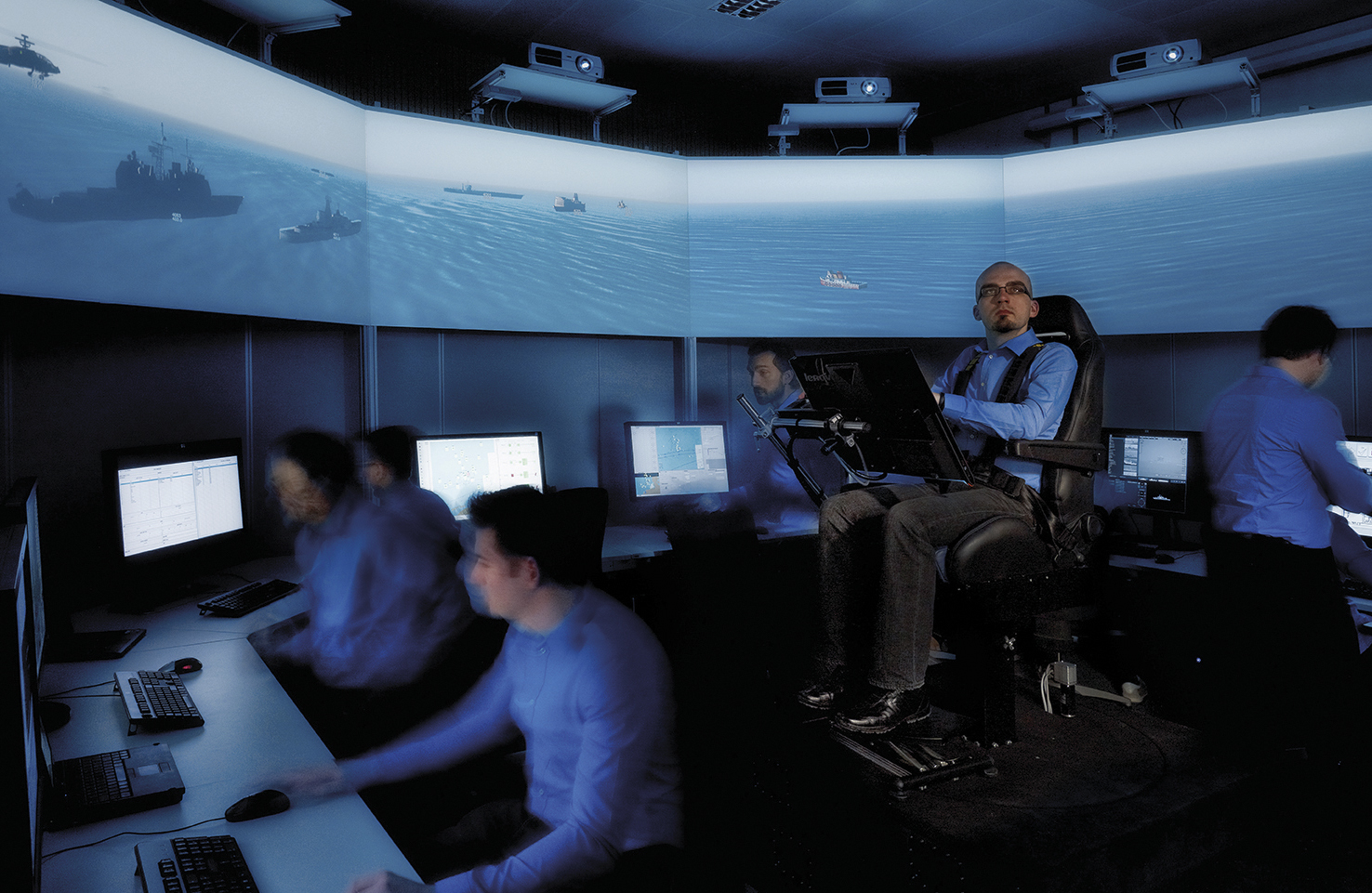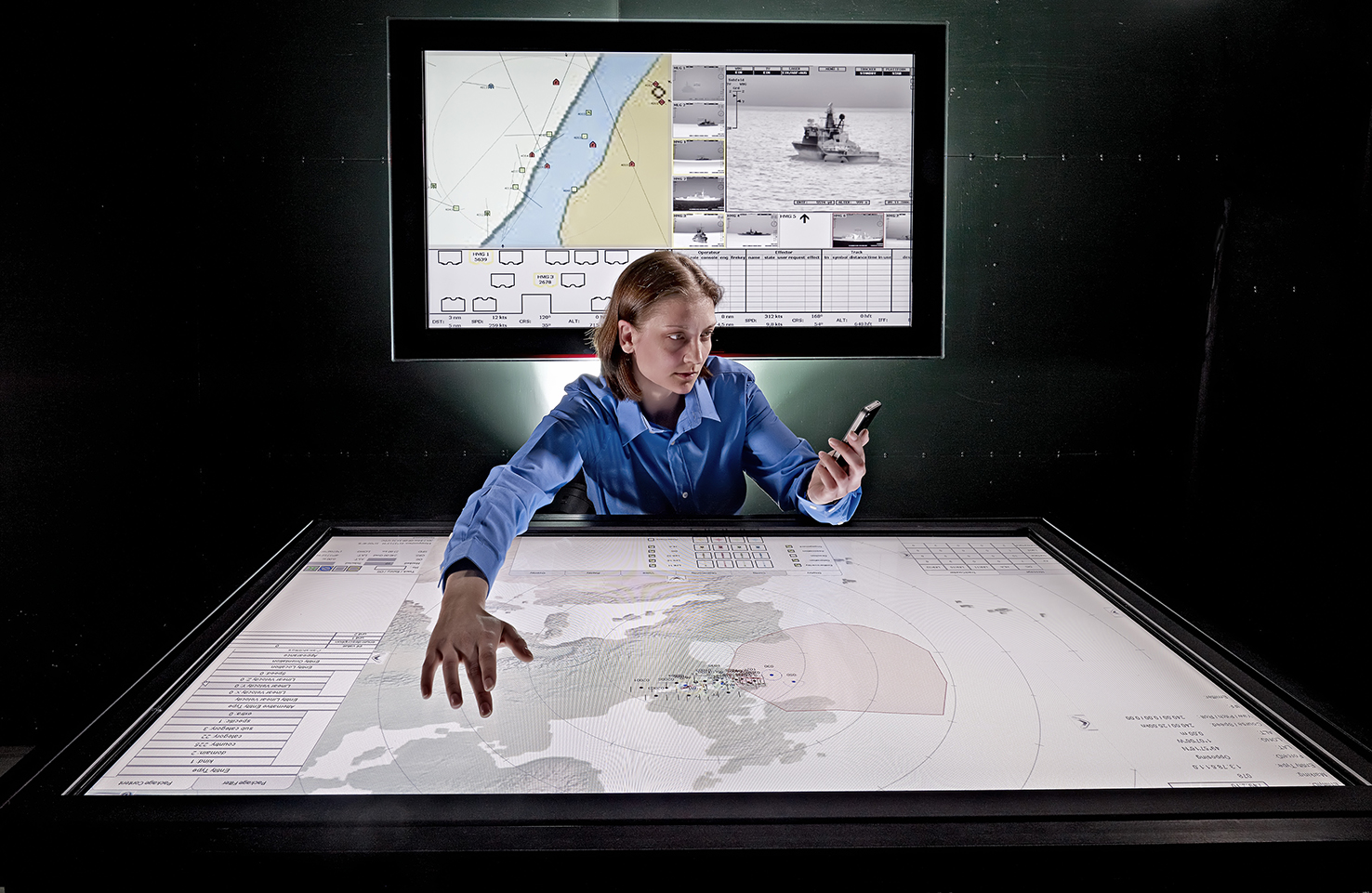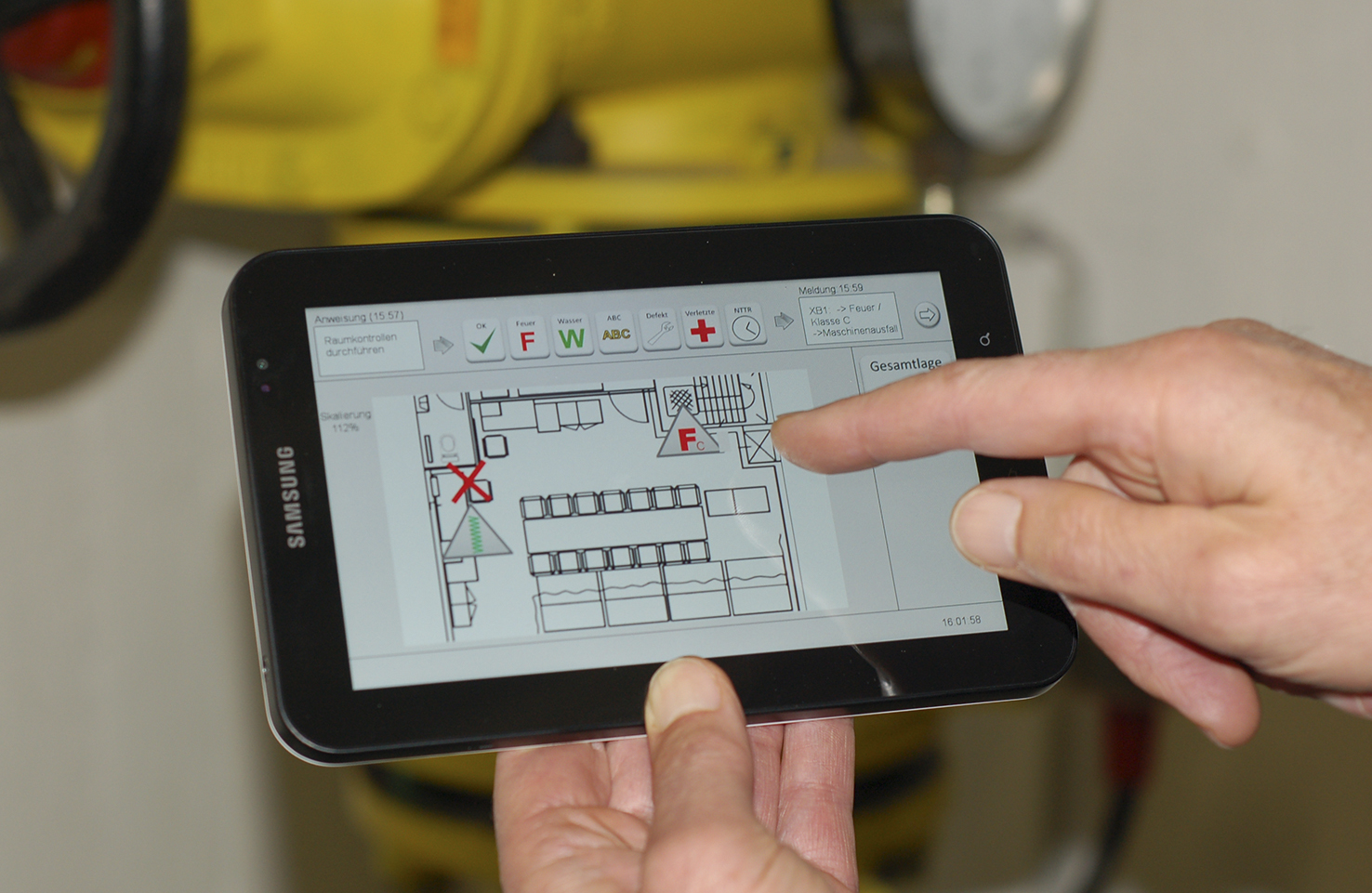It all started in 2011 with the idea of starting from a completely clean slate and drafting the command center of a ship beyond the current boundaries of design. Innovative ideas would be implemented as prototypes, theory would take on a tangible form to touch and test.
The concrete application is the operations center of a combat ship highly exposed to asymmetric threats. When civilian ships, boats or aircraft suddenly turn out to be a hazards because they are controlled by pirates or terrorists, a swift response is essential. Even a diver could be a ticking time bomb. The usual methods for identifying enemy contact used for military assets do not work here.
Humans often recognize the dangers posed by asymmetrical objects faster and more reliably than sensor technology, which is why the operation center of the future (OPZ) will extend the view of the human operator by enabling the user to observe the reality unfolding around the ship despite a lack of windows.

